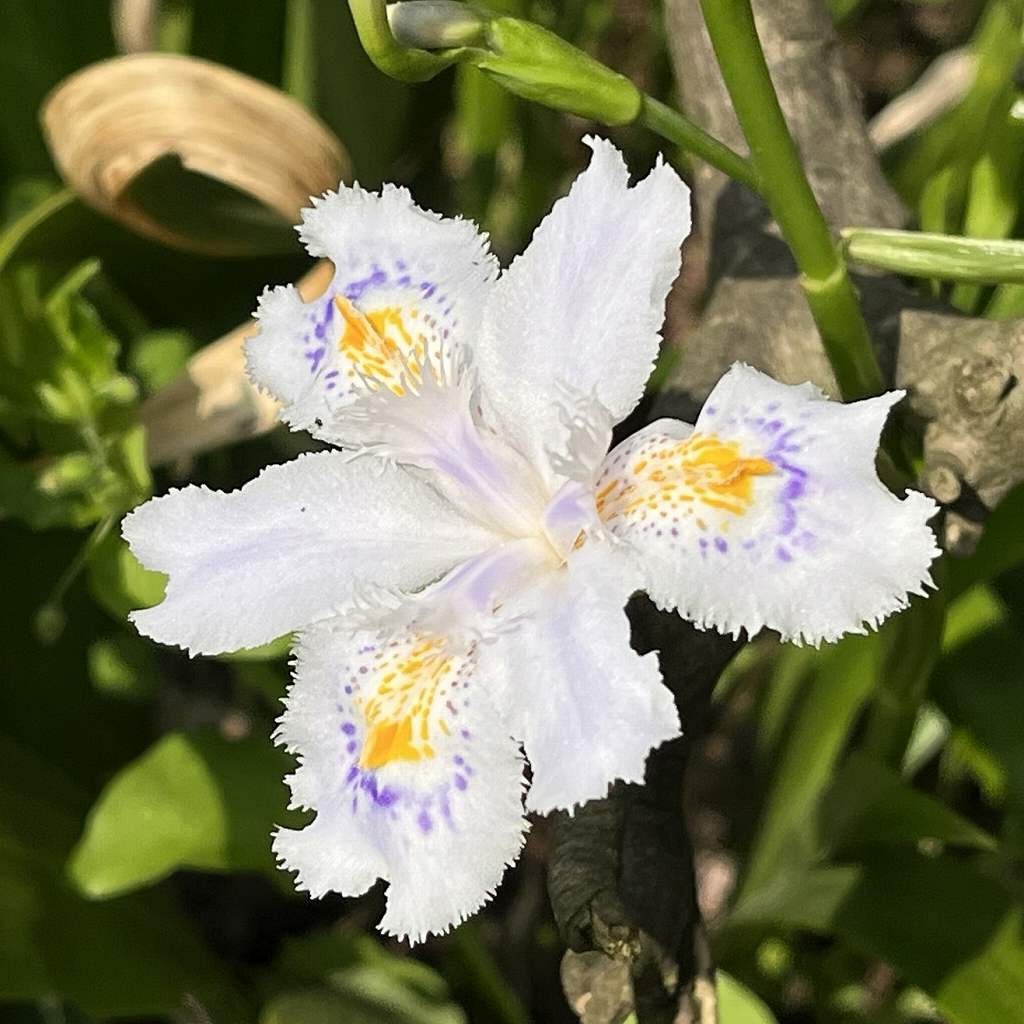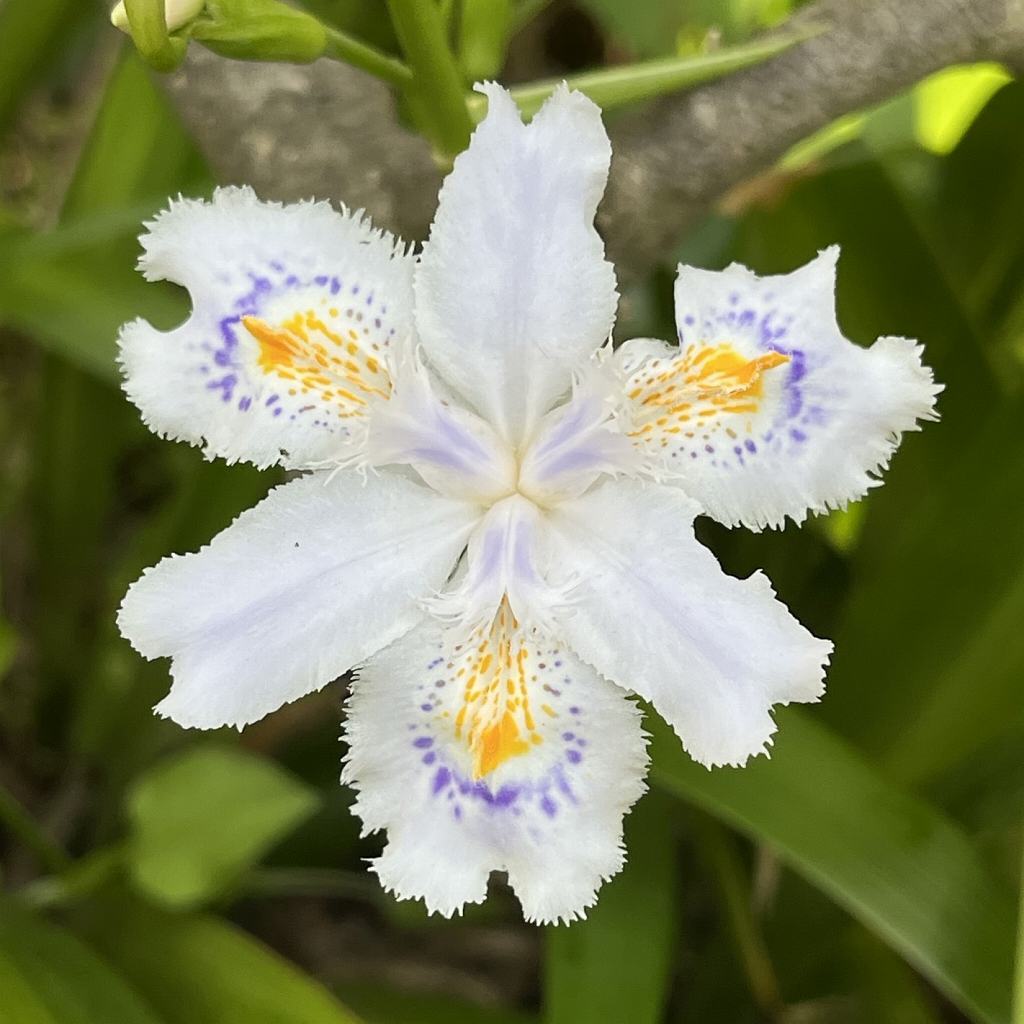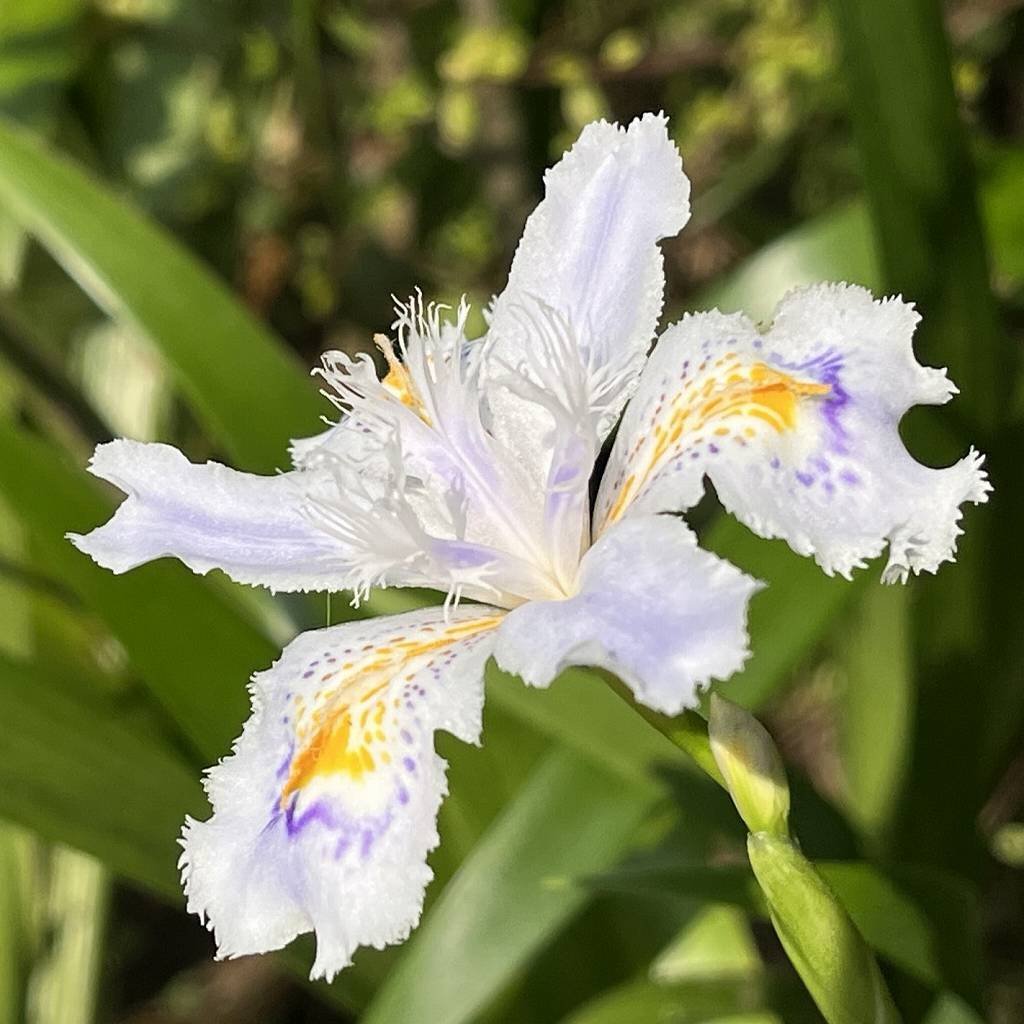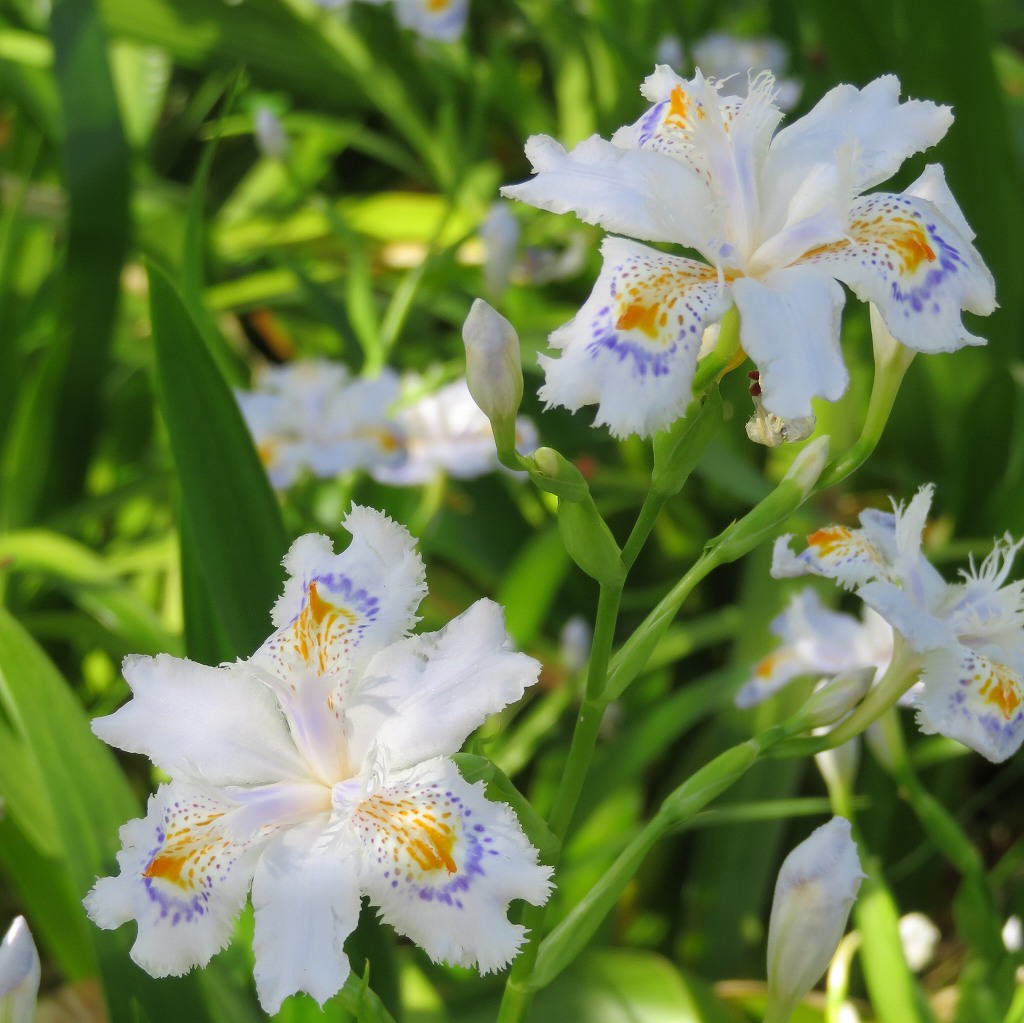シャガの英名は「縁飾りのある菖蒲」。花被片が小さく波打ちます。中国名は「胡蝶花」。儚いながら次々咲く小さな花々が蝶々のようです。
The English name of this flower is “Fringed Iris”. The tepals are slightly wavy. The Chinese name is “butterfly flower”. The small flowers that bloom one after another look like butterflies.
【仮名】シャガ, コチョウカ
【和名】射干, 著莪, 胡蝶花
【英名】Fringed Iris
【学名】Iris japonica
【誕生】04/ 27, 05/ 06, 06/ 08
【開花】04, 05月
【花色】White, Violet, Blue
シャガ
シャガの概要

シャガはアヤメ科アヤメ属の常緑多年草。原産地は中国で、日本へは古くに渡来しました。本州、四国、九州に分布し、人里に近い林野の湿ったところで群生。鑑賞用に植えられるほか、漢方で生薬に用いられますが、嘔吐や下痢を引き起こす恐れもあり、取り扱いに注意が必要です。
シャガの和名

シャガの和名は葉の伸び方が似ている檜扇の漢名「射干」に由来します。射干の語源はサンスクリット語の「シュリガーラ」で、尸林に棲む魔獣のこと。別名の「薯莪」は読みの当て字です。「胡蝶花」は中国名で、儚い一日花でありながら次々に咲く小さな花々が蝶々のようだから。
シャガの英名

シャガの英名フリンジドアイリスは「縁飾りのある菖蒲」といった意味。花被片の縁が小さく波打つからです。ラテン語の属名イリスは「虹」という意味。ギリシャ神話では天界と他界に橋をかける女神の名前です。種小名ジャポニカは命名時に日本が原産地であると誤解されたから。
シャガの姿形

シャガは根茎を浅く長く這い伸ばして広がり、大きな群落を形成。葉は扇状に根生して細長く垂れ、厚く硬く光沢があります。花は縁が小さく波打つ外花被が3枚、先端が2つに裂ける内花被が3枚、雄しべが3本、雌しべが3裂。日本の自生種は3倍体のため、花後に結実しません。
シャガの近縁

シャガの近縁種「姫射干」は草丈と花が小ぶりで、ラテン語の種小名グラキリペスも「細長い柄」という意味。花後に丸い蒴果を結び、寒くなると葉を枯らして冬を越します。種子でも殖えるものの、自生種は絶滅の恐れがあるほどまで衰退。その一方で園芸種が多く出回っています。
Fringed Iris

Fringed Iris is an evergreen perennial in the Iridaceae family. It originates from China and was introduced to Japan in ancient times. It is distributed in Honshu, Shikoku, and Kyushu, and grows in groups in damp forests near human settlements. In addition to being planted for ornamental purposes, it is also used as an herbal medicine in Chinese medicine. However, ingestion may cause vomiting and diarrhea, so care must be taken when handling it.
The Japanese name of Fringed Iris comes from the Chinese name of Blackberry, which has similar leaf growth. Its origin is the Sanskrit word “Shrigara”, which refers to a magical beast that lives in the forest. The Chinese name “butterfly flower” comes from the small flowers that bloom one after another, resembling butterflies, although they are fleeting flowers for one day.
The English name is “Fringed Iris”. This is because the edges of the tepals are slightly wavy. The Latin genus name Iris means “rainbow.” In Greek mythology, it is the name of the goddess who bridges the heavens and the other worlds. The origin of the species name japonica is that at the time of naming it, there was a misunderstanding that Japan was the place of origin.
Fringed Iris spreads by spreading its rhizomes in a shallow and long manner, forming large clumps. The leaves grow in a fan shape and hang down long and thin, and are thick, hard, and glossy. The flower has 3 outer perianths with small undulating edges, 3 inner perianths with a lobed tip, 3 stamens, and 3 pistils. The Japanese native species is triploid, so it does not bear fruit after flowering.
“Iris gracilipes”, a close relative of Fringed Iris, has smaller plants and flowers, and its species name means “elongated stalk.” After flowering, it forms round capsules, and when it gets cold, the leaves wither and survive the winter. Although it can be propagated by seeds, the native species have declined to the point where they are at risk of extinction. On the other hand, there are many garden varieties on the market.


